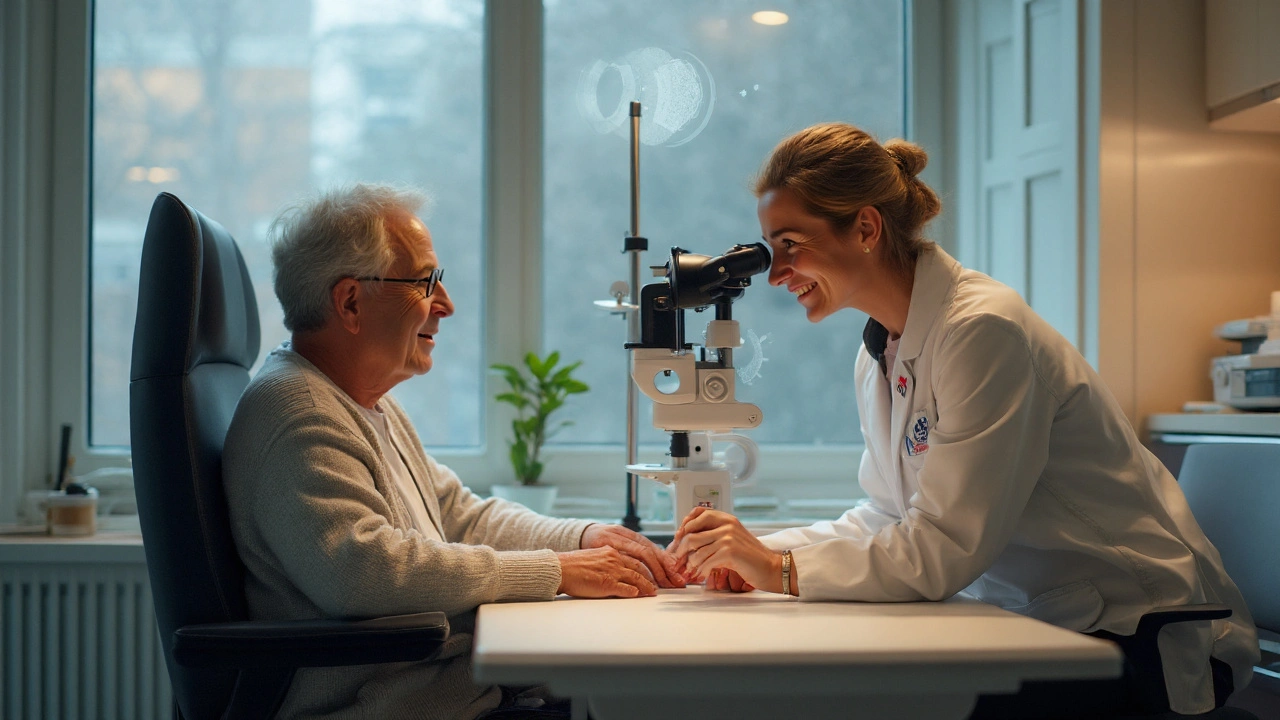Ocular Melanoma Screening: Simple Guide
Ever wonder if a spot in your eye could be more than just a freckle? Ocular melanoma is a rare eye cancer, but catching it early can make a huge difference. This guide breaks down the basics of screening, why it matters, and how you can get checked without hassle.
Why Screening Matters
Most people think of melanoma as a skin issue, yet it can develop inside the eye, often without pain. When caught early, treatment options are less aggressive and the chances of preserving vision are higher. Waiting until symptoms worsen can limit choices and increase the risk of spread to other parts of the body.
Screening isn’t about panic; it’s about peace of mind. A quick exam can spot tiny pigmented lesions that you might never notice yourself. Even if you have no family history, regular eye checks are a smart move, especially after age 40.
How to Get Screened
First step: schedule an appointment with an ophthalmologist or optometrist who does dilated eye exams. During dilation, drops widen your pupil so the doctor can see the retina and choroid clearly. The exam usually takes 15‑20 minutes and feels like a routine check‑up.
If a suspicious spot shows up, the doctor may recommend imaging tests such as ultrasound, optical coherence tomography (OCT), or fluorescein angiography. These tools create detailed pictures of the inside of the eye, helping the specialist decide if the lesion is benign or needs treatment.
Do you need a specialist? If your regular eye doctor finds anything unusual, they’ll refer you to a retinal specialist or ocular oncologist. These experts have extra training in eye cancers and will guide you through any further steps.
What can you do at home? Keep an eye on any new dark spots, changes in vision, flashes, or a feeling that something is “off” in one eye. Write down when you first notice it and share that info with your doctor. Early communication speeds up the diagnostic process.
How often should you screen? For most adults, a comprehensive eye exam every two years is enough. If you have risk factors—like light eye color, a history of skin melanoma, or a family member with ocular melanoma—annual checks are wise.Risk factors are simple to remember: light-colored eyes, fair skin, excessive sun exposure, and a personal or family history of melanoma. If any of these apply, be extra diligent about scheduling exams.
What happens after a diagnosis? Treatment options range from laser therapy and radiation to surgery, depending on tumor size and location. Your care team will tailor a plan that balances tumor control with vision preservation.
Bottom line: Ocular melanoma is rare, but it’s not untreatable. Regular screening catches it early, gives you more choices, and protects your sight. So, the next time you’re due for an eye exam, ask your doctor about a dilation and ask if they’ll look for signs of melanoma. It’s a small step that could save your vision.
Why Regular Eye Exams Are Crucial for Detecting Eye Cancer
Discover how routine eye exams catch eye cancer early, the types of cancer screened, exam components, and what you can do to protect your vision.
